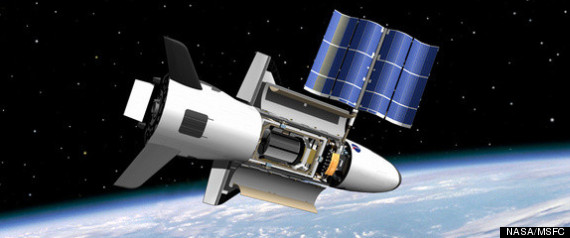
The U.S. Air Force's mysterious X-37B space plane is quietly chalking up mileage in space more than two months after its latest launch into orbit.
The robotic X-37B space plane soared into orbit atop an Atlas 5 rocket from Florida's Cape Canaveral Air Force Station on Dec. 11. The mini-shuttle's mission is known as Orbital Test Vehicle-3 (OTV-3), since it is the third classified mission under the Air Force's X-37B program.
How long OTV-3 will remain in Earth orbit is unknown. The hush-hush space plane mission is officially on Air Force space tracking books as USA-240.
"The mission is ongoing," Air Force Maj. Eric Badger, a spokesman for the X-37B program, told SPACE.com. "As with previous missions, the actual duration will depend on test objectives, on-orbit vehicle performance and conditions at the landing facility."
A new reusable space planeThe current flight underway has attained one known major milestone — that of reusability.
This same vehicle was flown on the maiden voyage in the X-37B program back in 2010. That OTV-1 mission lasted nearly 225 days in orbit and then zoomed back to Earth on autopilot over the Pacific Ocean, gliding down onto a specially prepared runway at Vandenberg Air Force Base in California.
The OTV-2 mission, which used a different X-37B vehicle, also made a Vandenberg touchdown on June 16 of last year after remaining in orbit for 469 days, more than doubling its sister ship’s stay.
There's a possibility that OTV-3 may not land in Vandenberg. There have been discussions about bringing the space plane down at the space shuttle landing strip at NASA's Kennedy Space Center, next door to Cape Canaveral, as a possible cost-cutting measure.
"The possibility of using the former shuttle infrastructure for future X-37B landing operations is still being investigated," Badger said.
source @
http://www.huffingtonpost.com/2013/02/22/secret-space-plane-air-force-robotic-x-37b-mission_n_2741771.html






